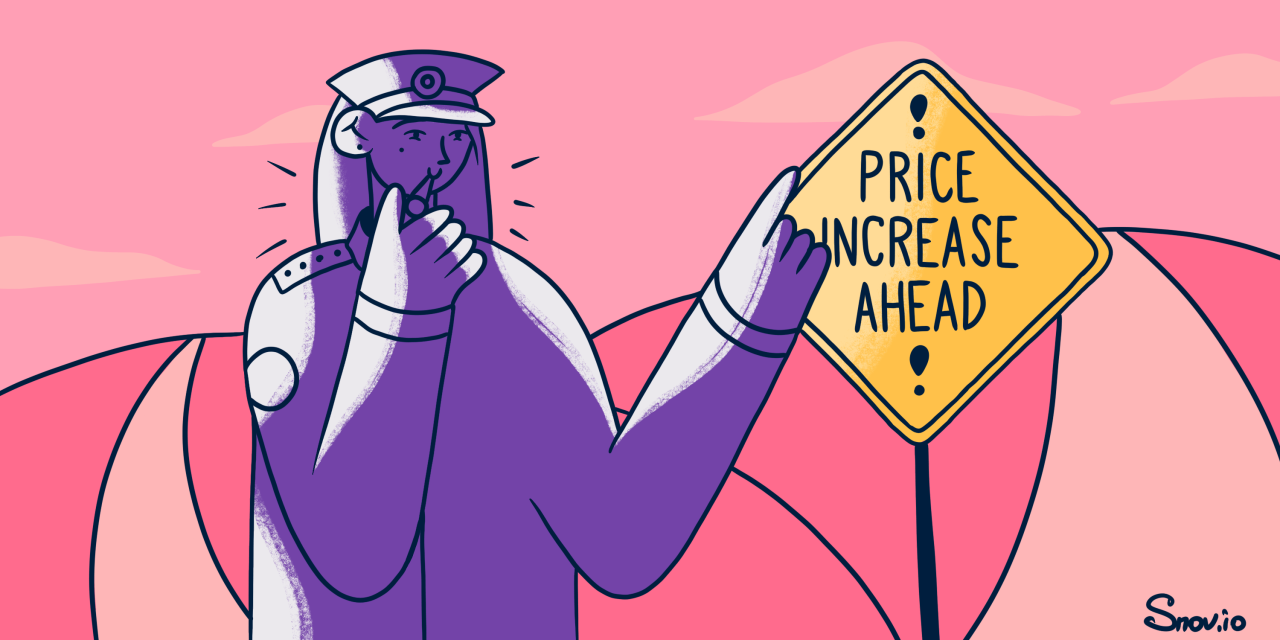In Zimbabwe, you are all too familiar with price movements. There are moments of relative price stability, but at times whirlwinds come. The operating environment has been hyperinflationary for years now. Thus the back-and-forth movement of prices is often the norm. Even in several other nations, inflation has been a menace from time to time. Despite how obvious it may seem consumers are still sensitive to price increases. There is a way you should increase prices when need be. You also have to pay attention when you do it. This is why we have to discuss the how and when of increasing your prices in business.
Always Trail Your Competitors In Raising Prices
This can be the start and end of the timing aspect. You can always time your price increases based on this strategy. The idea behind this is to find ways to appeal more to consumers. Let me use a relatable Zimbabwean example to drive this home. Have you ever closely followed Econet and NetOne price adjustments? Usually, it is Econet which increases prices first. NetOne does not immediately follow suit. It can wait, at times, for months and then increases its prices. When it does, it adjusts them so that theirs are more appealing. Do not forget that consumers would have been choosing them over Econet all this while.
This often happens regarding data bundles, as a good example. The last time Econet reviewed US-dollar data bundles, they increased the US$10 data bundle to US$12. NetOne’s similar data bundle still stands at US$10. NetOne is currently running a promotion for their cheaper US-dollar data bundles. Do you see the strategy here? That is what you should also do when it comes to increasing prices. Wait for your competitors to increase theirs, then delay yours. When you do increase yours, do it with an aim to appeal more to customers. Don’t shoot yourself in the foot in the process; make sure it’s viable.
Do Not Make Your Price Increases Too Obvious Or Significant
This is where applications of psychological hacks can genuinely come in handy. For example, we have discussed the concept of bundle pricing. You can bundle several products together as a combo. You include the one whose price you are increasing in the combo. Most customers might never notice it because it gets swallowed up in the combo. It is one of the strategies you can use to disguise price increases. The basic idea is to present an appearance of value and convenience for the customer.
There are several ways you can use to make price increases subtle. One of them is to stagger the price increase over time. The idea of making marginal price increases will give an impression of insignificance. The customers might not even notice that the price is increasing. These are some of the strategies you can use. The principle is not to make your price increases too obvious or significant.
Involve Your Customers In The Process And Prepare Them For Price Increases
You can opt not to be covert about it. You can initiate a conversation with your customers on a price increase. You can best do this by conducting a survey. You can do polls or make customers fill out survey forms. Google Forms can be really effective for this. That way, you can kill two birds, even more, with one stone. You get to pick your customers’ minds regarding the price increase. You get to receive inputs informing your ultimate decision regarding the price increase. In a way, especially if the price increase is inevitable, involving the customers prepares them. Generally, customers love to have a say in the strategic decisions of the businesses they buy from. You will be fascinated to find they might even gladly accept a price increase because you involved them in the process. The bottom line is to involve them and or prepare them.
Increasing Prices Is Not Always The Answer
Do not blinker yourself into thinking increasing prices is always the answer. The irony is that, at times, it actually hurts your business. This is the final point in our discussion today, but it can very well be the foremost one. It can be wise to make price increases your last resort. If you can achieve this, you can outpace your competitors unimaginably. You can start off by exploring ways you can reduce your operating costs. For example, you could find cheaper suppliers. You could leverage outsourcing and technology to reduce labour costs. You have to look at your cash flows. Take note of your core expenses. Find out if you can reduce them somehow without hurting the quality of your products or services. If you do this well, you can end up with zero need to increase the prices. Only increase the prices as a last resort – that should be your business approach.
If you do not pay close attention to these two dynamics, you will lose customers. It is always about striking a balance when making sensitive decisions in business. Pricing is a delicate issue, especially when dealing with price-conscious consumers. It is that very same metric that your competitors can use to overtake you. That is why it is vital that you seriously look into your economies of scale. If you can find ways to reduce your operating costs, it helps lessen the pressure on you to increase prices significantly.








